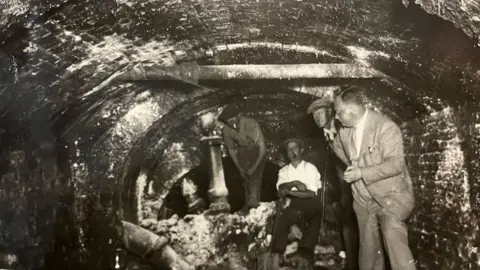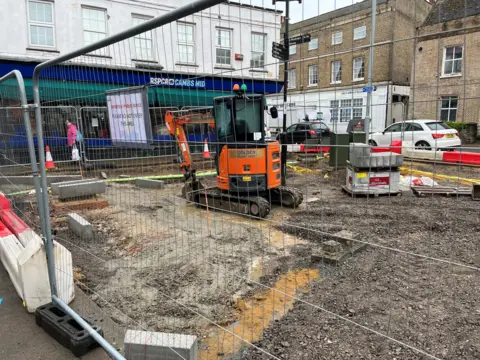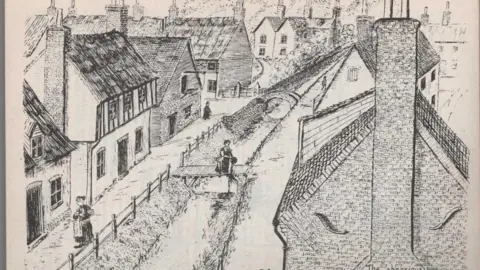Historic waterway tunnel unexpectedly uncovered
 John Devine/BBC
John Devine/BBCPart of a historic tunnel has been unearthed during renovation work in a Cambridgeshire town.
The Hythe in March was a natural waterway through the town and was later used as an open sewer, thought to be a contributing factor to many deaths from a cholera outbreak in 1849.
The structure was bricked over as a result, but resurfaced after further regeneration work on the High Street started last week.
David Edwards, archivist at March and District Museum, said the tunnel was "an important part of the town's history".
 Cambs Times/NewsQuest
Cambs Times/NewsQuest"Originally it was an open ditch that ran all the way down March High Street," said Mr Edwards.
"It went on to become an open sewer and in the mid-1800s was bricked over after an investigation following a cholera outbreak that killed around 100 locals."
 John Devine/BBC
John Devine/BBCThe waterway continued to discharge raw sewage into the nearby river until the 1950s, at which point a new drainage system was opened in March.
"The new system was mooted in the 1930s, but World War Two came along and put that plan on hold - then after the war, money was short, so again it got delayed," he explained.
Mr Edwards said the Hythe was still in operation - used to displace surface water into the River Nene.
 Trevor Beavis/March and District Museum
Trevor Beavis/March and District MuseumCambridgeshire County Council said its contractors unearthed a section of the Hythe earlier this week.
It has since been covered up again without damage to the brickwork and it will not be excavated, a spokesperson says.
They said the precise locations of historic infrastructure such as old sewers were often not accurately mapped.
"While we were broadly aware that the Hythe passed through the centre of March, we hadn't anticipated discovering it exactly where we did—just outside the Iceland supermarket," the council spokesperson explained.
Follow Cambridgeshire news on BBC Sounds, Facebook, Instagram and X.
